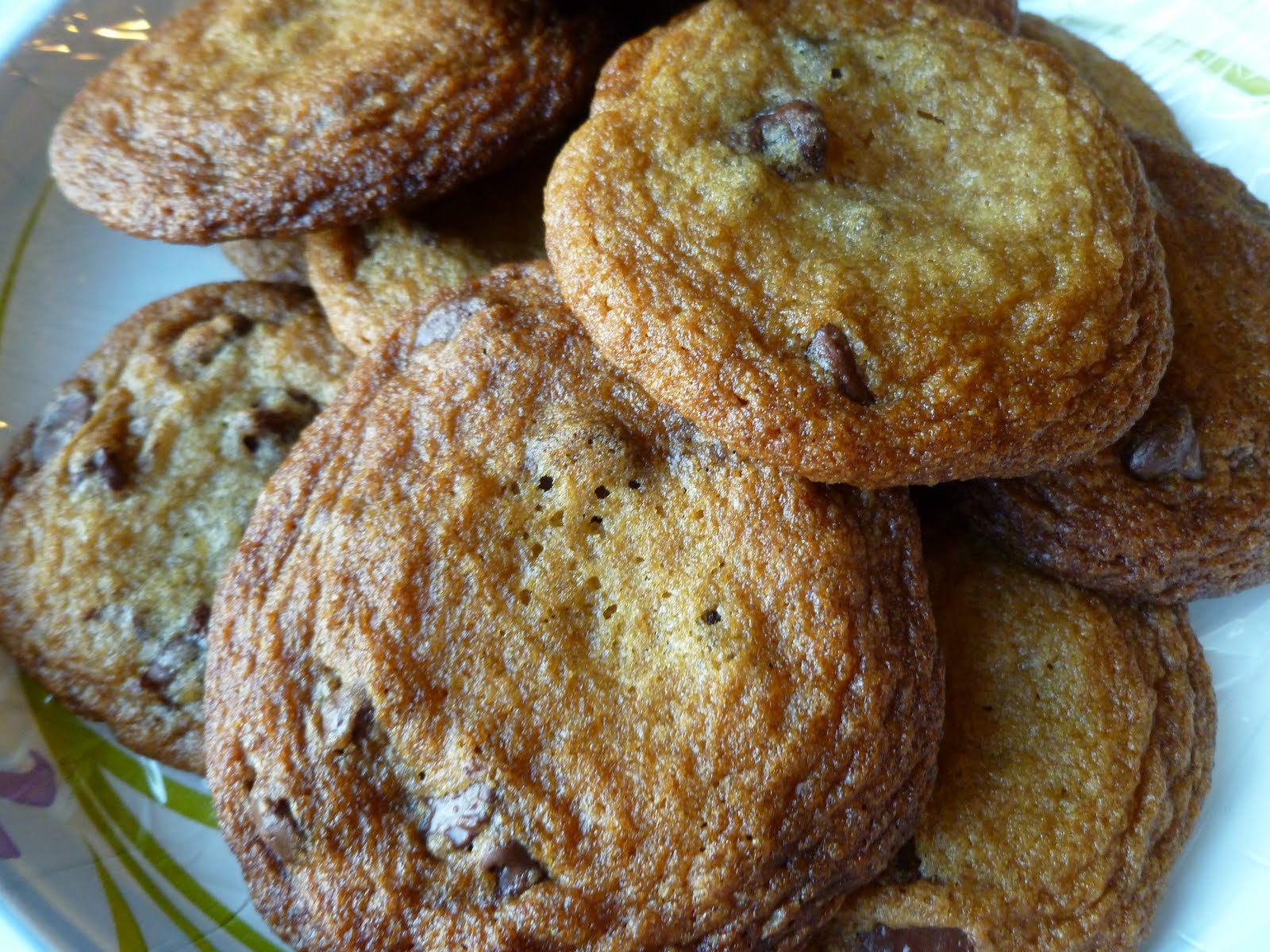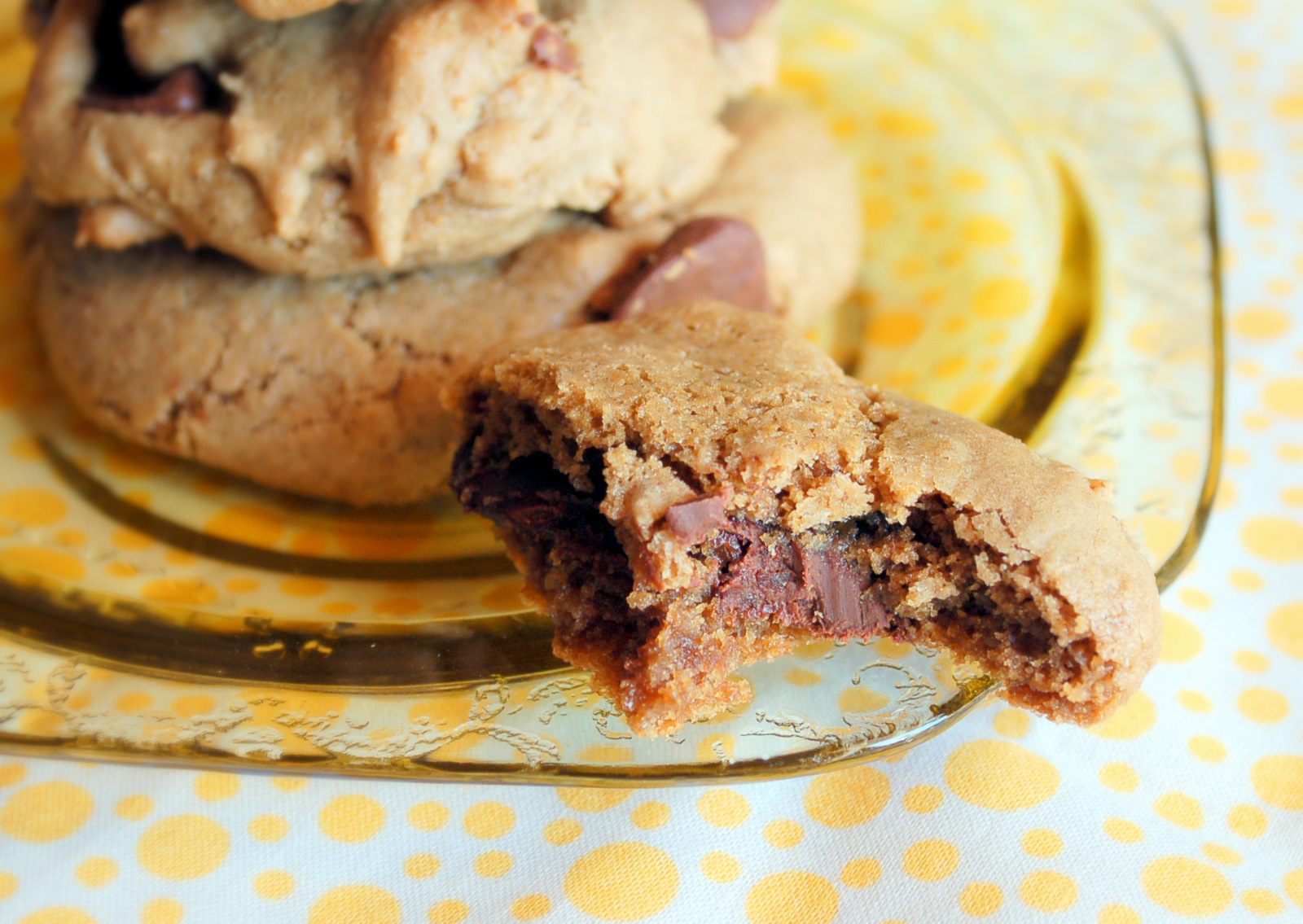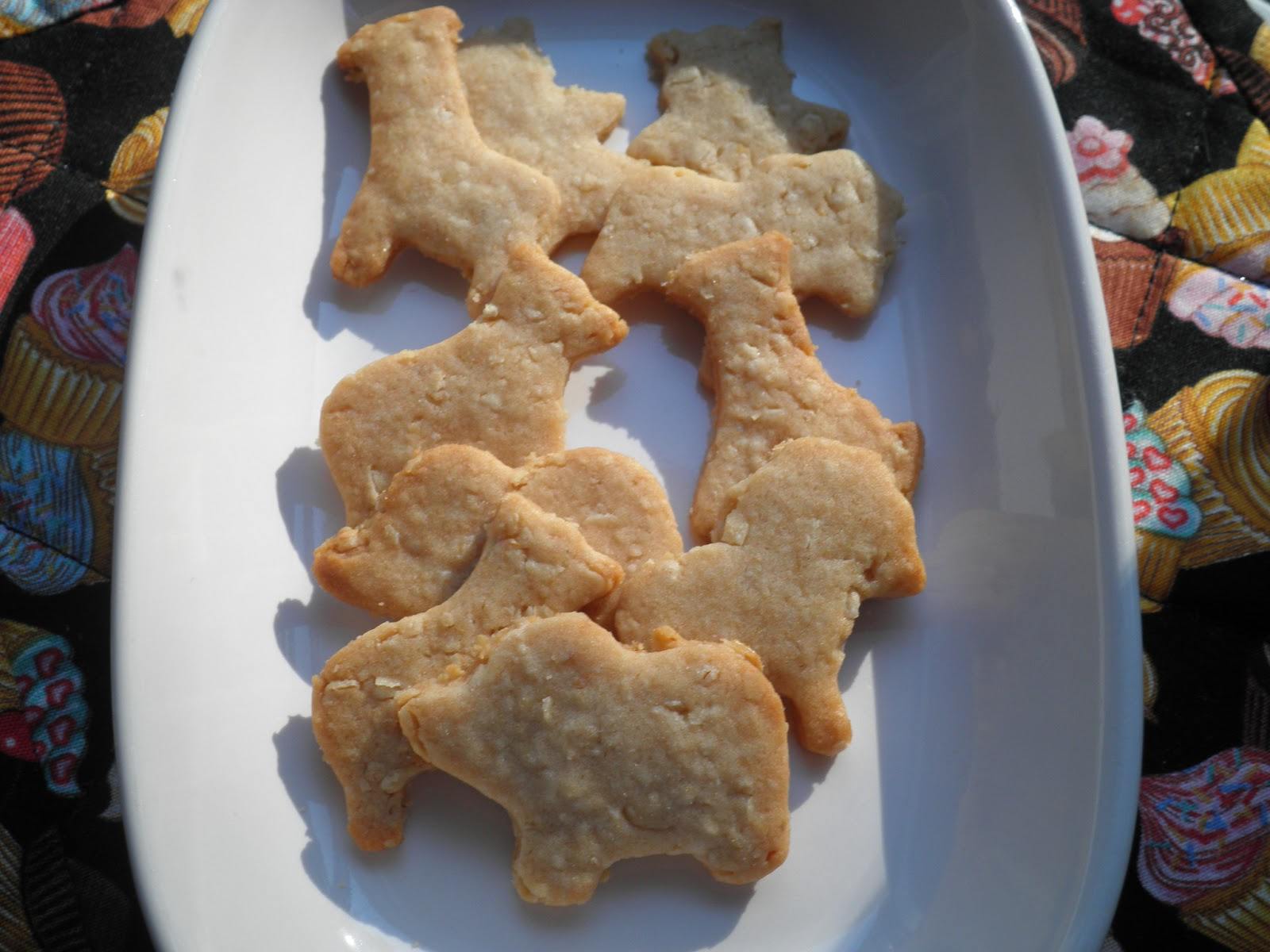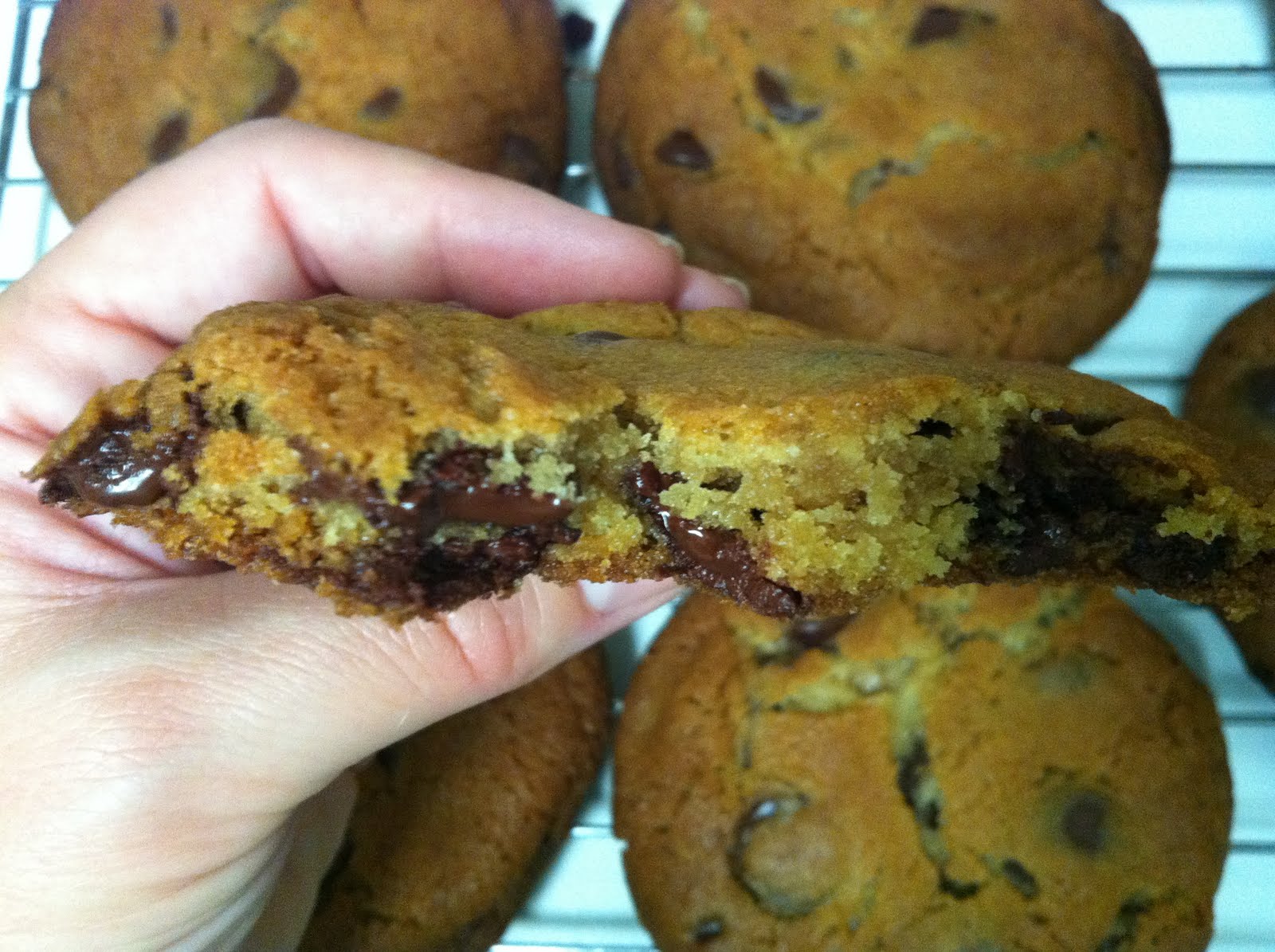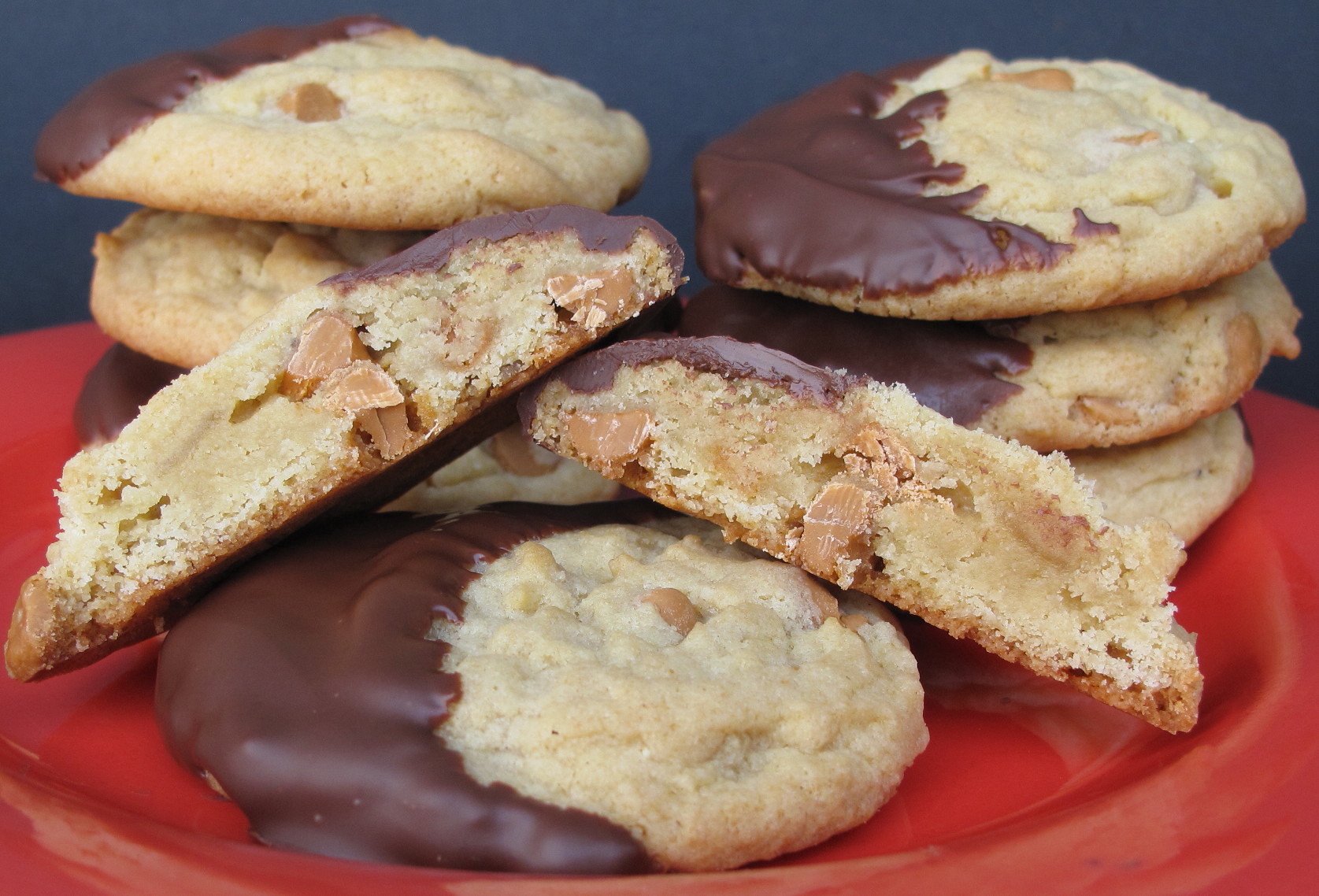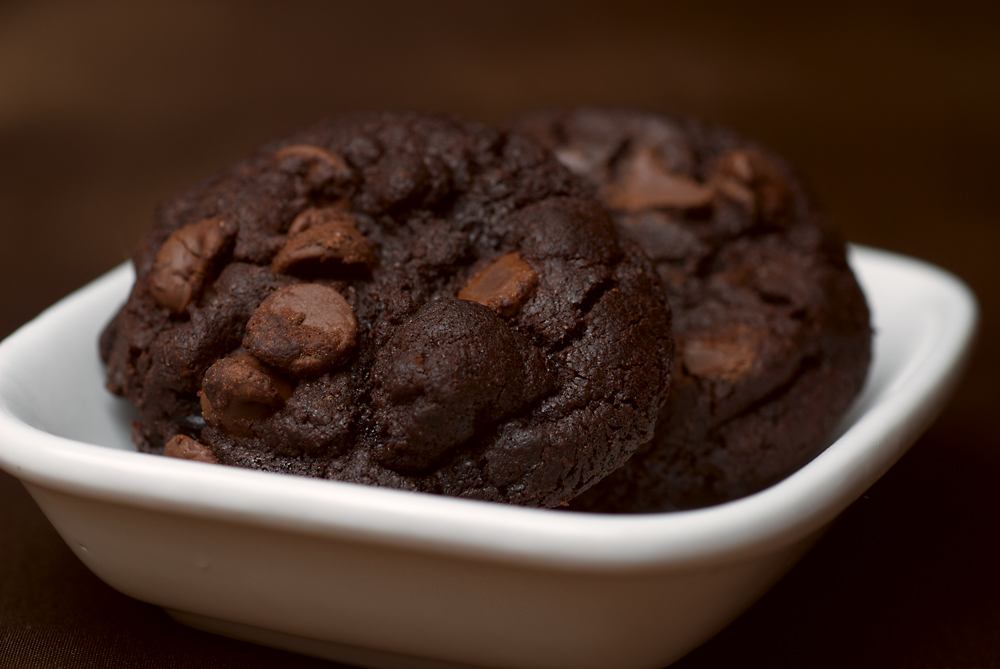1. Thin and chewy
Thin and chewy cookies are easily achieved by simply following the Toll House recipe which inevitably results in these cookies. Kendra Nyberg, from the Science & Food Student Organization, explains how the Toll House Cookie Recipe helps achieve a chewy and thin cookie. The recipe increases cookie water content making for a chewier cookie as water increases gluten production. The recipe uses less flour than some other cookie recipes. The recipe also includes melted butter, fewer egg whites, and more brown sugar which increase the cookies gluten-producing chemistry.
2. Thick and soft
Kendra Nyberg also explained how to achieve a thick and soft cookie at one Science of Cookies student event held back in 2013. The recipe at hand is from My Baking Addiction, and unlike the previous recipes, asks for less moisture to achieve a soft cookie. Less moisture results in less gluten production according to Nyberg. The increased flour content with the leavening agents makes for more fluff in the cookies resulting in a much softer and thicker texture. For a bit more flavor, you can also add oatmeal or flaxseeds which are some of the best anti-aging foods.
3. Like store bought
Store bought cookies have something special about them that we can definitely learn to appreciate. Tessa Arias, a chef and cookbook author who writes about cookies science on her Handle the Heat website claims that you’ll achieve the store-bought cookies texture by replacing butter for shortening. Unfortunately, this takes away some of the flavors of the cookies in which case you can use the half-butter and half-shortening mixture.
4. Thick cookies
If you like your cookies extra thick, then freezing the cookie batter overnight or for at least 30 minutes before baking. This will keep the butter firmer for longer during the baking process and make it less likely to spread over resulting in a full mouth of wonderfully thick chocolate chip cookies. Furthermore, if you want to get some health benefits from your cookies, using organic un-pasteurized butter can help if you have osteoarthritis. Stigmasterol is an ingredient in unpasteurized milk products found to reduce inflammation in Osteoarthritis, which is one of the most common types of arthritis.
5. Cakey cookies
Cakey cookies aren’t usually what most aim for when making chocolate chip cookies, but, nevertheless, it’s a fact that some like their cookies extra soft with less moisture content. According to Nyberg, putting more baking soda into your cookie dough will increase the release of carbon dioxide in the cookies. This will result in puffy and soft cookies.
6. Butterscotch-flavored
The intense butterscotch flavor of cookies also has a scientific explanation behind it. According to J. Kenji Lopez-Alt on his blog post The Food Lab: The Science of the Best Chocolate Chip Cookies, the enticing flavor of cookies comes from sugar caramelizing during the baking process. Putting a white sugar will make for a richer-flavored cookie because white sugar tends to melt easily and caramelize at a faster rate than brown sugar.
7. More flavor
If you really appreciate the cookies for their flavor first and foremost, Nyberg found that chilling the dough for at least 24 hours will deepen the flavors due to longer exposure of the dough to the flavoring ingredients such as vanilla extract, brown sugar, and butter. This may also make for better-textured cookies.
8. Dark cookies
Tanned and extra caramelized cookies are achieved by just slightly increasing the oven temperature from say 350 degrees Fahrenheit to 360 degrees. This is explained in the TED-Ed video about the Science of cookies. According to the TED-Ed video, caramelization occurs just above 356 degrees Fahrenheit.
9. Uniform cookies
Chocolate chip cookies aren’t really all about appearances, but if you want your cookies to look their best, they secret may lie in corn syrup. According to the OZY website, to create uniform cookies for a nice look, add half corn syrup and half sugar to your cookie dough.
10. Gooey cookies
You can achieve gooey cookies by either adding 2 more cups of all-purpose flour or even adding just two tablespoons of cornstarch to the cookie ingredients. Tessa Arias found that although the cornstarch made the cookies paler in appearance, the extra ingredient resulted in gooey, soft, and with crisp edges.
Conclusion
Chocolate chip cookies are essentially quite easy to make. However, getting that perfect texture and flavor you want to achieve can be quite frustrating. The main reason why cookies vary so much in texture, appearance, and the flavor is that it all depends on the ingredients ratio and cooking time. If you’ve found your favorite cookie listed here, make sure to follow the tips and see if you’ll finally indulge in the cookie of your liking.
References
- https://www.verybestbaking.com/recipes/18476/original-nestle-toll-house-chocolate-chip-cookies/
- http://www.ozy.com/good-sht/the-science-behind-baking-the-most-delicious-cookie-ever/6613
Featured photo credit: www.huffingtonpost.com via google.com
